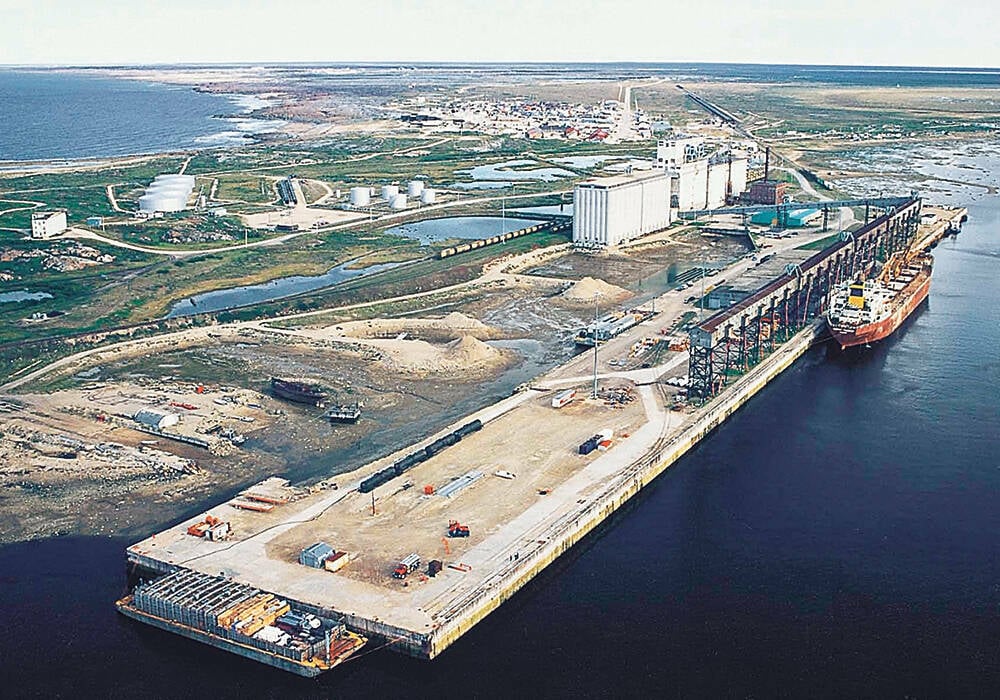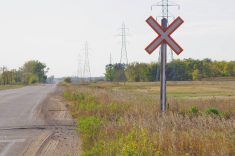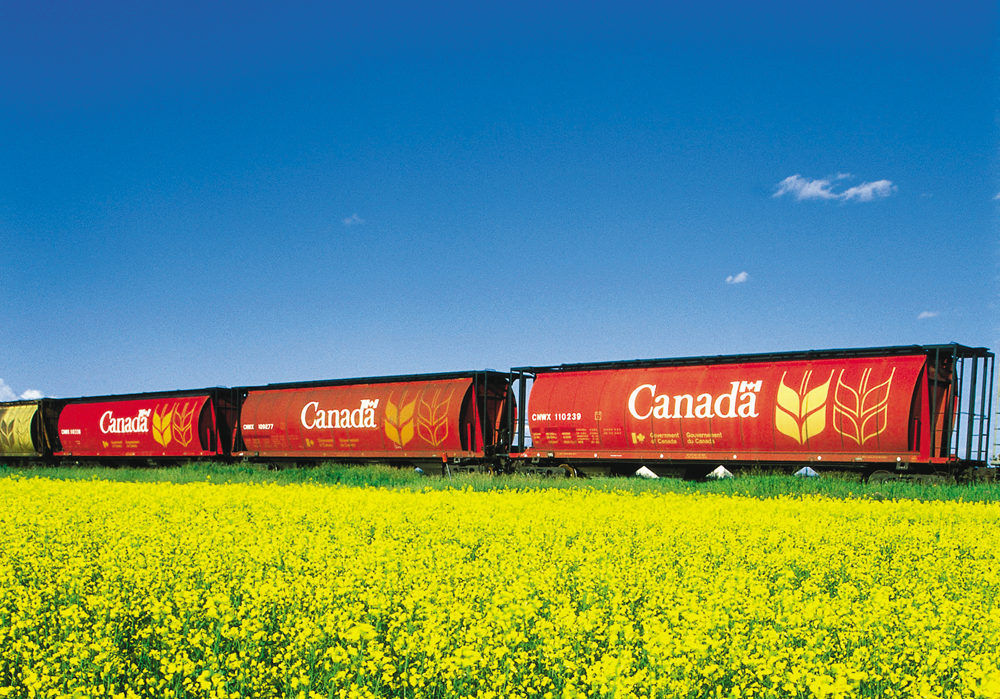Abanner year for Manitoba’s first farmer-owned railway is fuelling interest in two more.
Leaders of two proposed locally owned Manitoba shortline railways said they are more optimistic than ever after visiting the Boundary Trails Railway Company (BTRC) operations and producer car loading facilities here last week.
Harold Purkess, president of the River Hills Railroad (RHR) and Randy Penner, co-chair of the Lake Line Railway Company (LLRC), said they were impressed BTRC shipped 500 producer cars of grain in its first year of operation.
“Nothing breeds success like success itself,” Manitoba Agriculture Minister Stan Struthers said in an interview after announcing $25,000 and $23,000 towards the cost of feasibility studies for RHR and LLRC, respectively.
Read Also

Port of Churchill revamp gathers pace
Canada’s Port of Churchill Plus update plan hopes to expand trade, including agriculture trade, at Manitoba’s Arctic sea port
LLRC has been working with CP for a year to buy 60 km of track from Selkirk to Gimli. RHR wants to purchase 102 km of track from CP between Nesbitt and Rathwell.
Struthers said the province wants to help build on BTRC’s success. “They have done such a good job at Boundary Trails. We think there has been a lot of payback for the farmer and little rural communities. And we think we can replicate that in other parts of the province,” he said.
LOCAL PAYBACK
BTRC, owned by 70 farmer-shareholders, purchased 40 km of Canadian Pacific Railway (CP) track between Binney Corner (just west of Manitou) and Morden, creating Manitoba’s first farmer-owned railway last year.
Farmers saved $500 to $1,800 per car shipping 500 cars between June 2009 and July 31, 2010. That kept hundreds of thousands of dollars in local farmers’ hands, Struthers said.
Dockage averaged just 0.68 per cent; 72 of the 500 cars had zero dockage, said BTRC general manager Travis Long. Those farmers saved an extra $400 a car because the cleaning fees were waived.
Most of the wheat moved in producer cars via BTRC goes to Mission Terminals Inc. in Thunder Bay. It gives farmers blending deals similar to elevator companies, based on samples submitted before the wheat is shipped, Long said.
TRUCKING PREMIUMS
The line has helped in other ways too. Trucking premiums of around $8 a tonne are back thanks to BTRC’s creation, Long said. That benefits the farmers who don’t ship grain on the shortline.
BTRC vice-president Steve Konrad estimates hauling grain five miles to the new car loading facility at Binney Corner instead of 25 or more to the nearest elevator means two months less work on his farm.
BTRC president Kevin Friesen said he loaded four rail cars (the equivalent of eight super B semi trucks) one morning and in the afternoon he waited five hours in line to dump just 30 tonnes of grain at an elevator.
BTRC wants to ship 650 cars this year and eventually move 1,000 annually, Long said. Most of the shipments so far have been wheat, because the Canadian Wheat Board will take delivery at port.
But BTRC is working with several grain companies that don’t have elevators nearby on shipping producers’ canola. If that proves feasible it could bolster BTRC’s business, he said.
Although the BTRC line is only 40 km long, it already has three producer car loading facilities, with a fourth soon to come. One facility, located in Manitou, can load a car in eight minutes.
“It means producers believe in this and it’s economical ,” Penner said in an interview. “They’re making money and putting an investment in and seeing the long-term benefit. That’s encouraging to me.”
RAISING CAPITAL
Penner said the proposed Interlake railway company is hoping to have a deal in place by month’s end.
“If we have a good crop next year and we have grain to move I think farmers will put the money out,” he said, adding raising money from Interlake farmers suffering their third year of excess moisture is tough.
LLRC has some advantages such as the 500 cars a year shipped by the Diageo distillery at Gimli, Penner said. The line has the potential to move a lot of grain grown in the region. Since the line runs through cottage country there could be potential tourist business.
The Rathwell-Nesbitt shortline has advantages too, said Purkess. It’s relatively long so it has access to more grain. It’s also connected to CP lines to the west and east.
Although RHR has until next May 31 to reach an agreement with CP, the shortline company needs to know it has the necessary funding by Feb. 28, 2011. That’s when CP must be paid a 10 per cent non-refundable deposit.
RHR has 100 shareholders and Purkess said he’s confident they’ll get 100 more and raise the capital needed to buy the line.
“We’ve got a lot of work to do in a short time to do it,” he said.
———
“Itmeansproducers
believeinthisand it’seconomical,”
– RANDY PENNER
———
“We’vegotalotof worktodoinashort timetodoit.”
– RANDY PENNER















